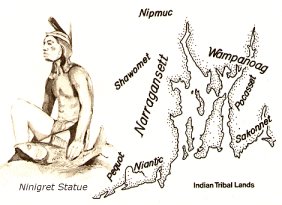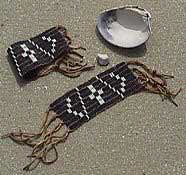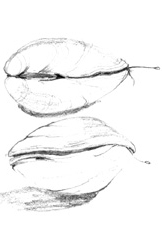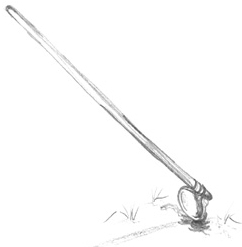 | |||||||||
 |
History and CultureNative AmericanBefore European colonization, the coastline along the Atlantic was described by a member of the Narragansett Indian tribe, as pristine and forested. The colonists cleared the forests creating an open and treeless landscape. Today, much of the coastline is without its forests.  Courtesy of The Marine Advisory Service, a Sea Grant Program Trade:The Narragansett's, as most coastal Native American tribes, used water transportation as their means of getting to areas that were used for trade. Wampum was tiny purple or white shell beads that were made from quahogs and whelks. It was a means of currency that was traded for fur, food, land and labor.Wampum was sacred and used by various Native American peoples for many purposes other than currency. For example, wampum was woven together with sinew to create patterns and pictures that symbolized the historical and family events of the people. Among the Wampanoag, a southern New England nation, warriors used wampum belts to help them remember certain events that they shared as stories during annual feasts. The new events of each year were woven into the belt and added a new chapter to the tribal history. The belts grew longer and longer with each passing year.
Other native people in New England used wampum for trade, gifts (for political or social obligations), and decoring or ornamenting the apparel of sachems or other special people. Wampum was also used as a record of agreements between native nations and European colonists or explorers. Military:King Philip, the sachem of the Wampanoag tribe, located in southeastern Massachusetts felt that war was the only way to save his land from European invaders. Puritans were claiming the land without agreement or purchase.
Recreation:It is said that Narragansett, Rhode Island was the birthplace of American football. The first football games might well have been played along the shores of the Narragansett Bay. The Native Americans also performed symbolic dances. Native American sport festivals included a wide variety of skill, speed and endurance. The prizes for these games included strings of wampum to be placed on the village goal post. Gambling was part of the culture. They gambled with cards made from 'strong Rushes' and dice made from painted plum stones. Natural Resources:The Native Americans used estuaries as a source for food and clothing and to make weapons, utensils and tools. Bones, shells, scales, skins and fish bladders were all used to create these items:
Native Americans fished and dug for clams, they had big feasts of oysters, clams and lobster. Aquatic plants were also eaten during the summer season and then dried for storage to consume during the winter season. Summer Homes:Native Americans built summer homes along the sea. Here, they prepared for the winter months by planting various crops to produce food for the winter. Many times, the summer home locations were changed every few years. This allowed the natural resources to be preserved and prevented destruction of the fragile coastal ecosystems.
Top of Page & other History & Culture Choices
|
||||||||


